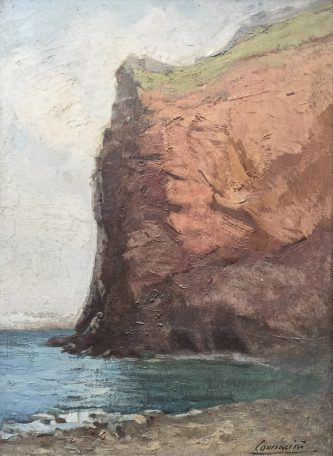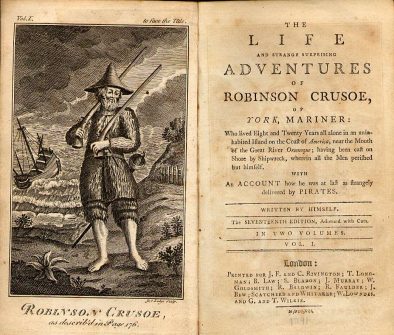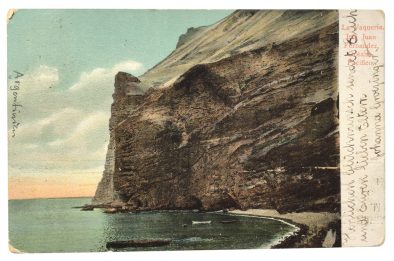
"Now as the waves were not so high as at first, being near land I held my hold till the wave abated, and then fetched another run, which brought me so near the shore, that the next wave, though it went over me, yet did not so swallow me up as to carry me away; and the next run I tool I got to the mainland, where, to my great comfort, I clambered up the cliffs of the shore and sat me down upon the grass, free from danger, and quite out of the reach of the water". Daniel Defoe
The Cliff’s Gaze departs from a nineteenth century painting by an unknown artist, which hung in my great-grand father’s desk in Valparaiso, Chile. The painting depicts a romantic view of a cliff in Robinson Crusoe, an island that belongs to Archipelago Juan Fernandez, 670km west of San Antonio, Chile in the South Pacific Ocean. The archipelago was formed by ancient lava built though seismic episodes, with steep, rugged mountain ranges with deep peaks and practically no flat areas. The islands are sixty-one times richer in endemic plant species per square kilometer and thirteen times greater in endemic bird richness than the Galápagos. However, is one of most ecologically vulnerable ecosystems in the world due to invasive species that are destroying native plant and animal populations.


I ultimately seek to visit the island to find the cliff and create a create a unique photographic body of work.